Henry Clay Furnace at Coopers Rock
Posted by Jessica McMillen.June 29th, 2020
Blog post by Lee Maddex, Archives Processing Assistant, WVRHC.
The Henry Clay Furnace hike is one of the most popular hikes taken on Coopers Rock State Forest. It is a relatively short hike, about one mile to the furnace and it is rated as a moderate hike, not too easy, not too difficult. On any given day, numerous hikers can be found along the trail or at the furnace. I have made the hike to Henry Clay Furnace perhaps thirty-five or forty times since the late 1980s and have explored forest adjacent to the trail and furnace many times, as well. During these adventures, I have found the numerous remains of the iron industry. This blog post provides a hiking guide to the vestiges or remnants of the iron industry to see along the trail to the furnace. First a brief history of the Henry Clay Furnace.
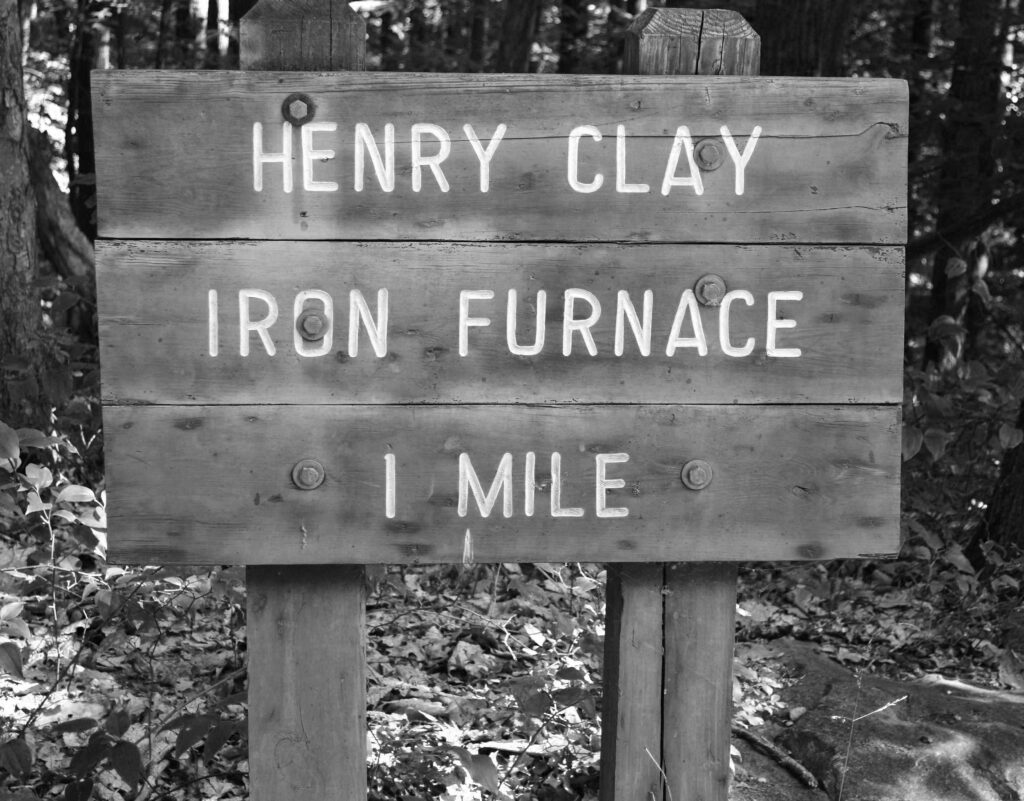
Brief History
Leonard Lamb constructed the Henry Clay Iron Furnace in 1834 for the Pittsburgh, Pennsylvania firm of Tassey, Morrison and Semple. Lamb presumably named the furnace Henry Clay after the Kentucky senator Henry Clay, who was a great proponent of the American iron industry. Interestingly, Lamb also named his third son Henry Clay, as well (born December 22, 1834). The Henry Clay Furnace was the first steampowered iron furnace in Western Virginia and operated until 1848. It was abandoned after its iron ore supply was depleted.
The Henry Clay Furnace was part of a larger ironworks complex. At its height in the late 1840s, this industrial complex (known as the Monongalia Iron Works), included not only the Henry Clay Furnace, but two additional iron furnaces, the Woodgrove and Anna furnaces; and a cut nail factory, a stove works, a rolling mill, puddling furnaces, sawmill, and grist mill located at Ices Ferry; plus some 14,000 acres of timber and iron ore lands in Monongalia and Preston counties. Interestingly, the footprint of Coopers Rock State Forest sits virtually on top of the footprint of this historic ironmaking tract.

Remnants of the Iron Industry
The Henry Clay Furnace is the most recognizable remnant of the ironmaking industry that once flourished on the present-day Coopers Rock State Forest. What follows is a guide to the less oblivious remains of this iron industry and takes the form of a travel log starting at the Henry Clay Furnace parking lot.
The road to the Henry Clay Furnace (aka Clay Furnace Trail) is a less than oblivious vestige of the iron industry. Today this road is just one of many forest trails, connecting with several other forest trails, but it predates the building of the Henry Clay Furnace. The road’s construction dates to the early nineteenth century, and historically it led east to the crossroads at Hopewell Church and west to a point on the early road across Chestnut Ridge. Like real estate, where location is key, iron furnaces needed to be near its raw materials (iron ore, timber for charcoal and limestone), making its location crucial. Leonard Lamb chose a site that was ideal for an iron furnace. Not only was the furnace site near its raw materials, but the road facilitated the construction of the Henry Clay Furnace. It permitted relatively easy access for the stone masons to quarry and transport stone to the site, and after its completion, transporting of the product of the furnace, pig iron, to Ices Ferry. Just imagine hauling a huge steam engine to the furnace site over this road!
As you leave the Henry Clay Furnace parking lot on the way to the furnace, the road will initially be rocky and rough. After about 0.25 miles, the road will start to level out. Look to the right and you will notice a trace of trail running diagonally down into the woods. This is not a trail, but the remnant of a tramroad. This tramroad was a horse drawn railroad, that was used to haul iron ore to the furnace from the nearby iron ore mines.
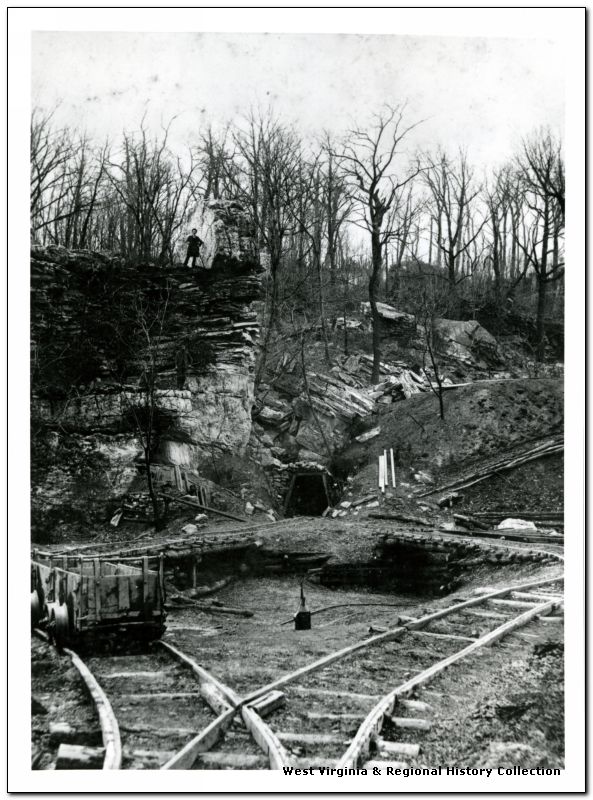
Continue down the road. After a short distance, about 150 feet, look to the right and you will notice several deep holes below the road. These are iron ore mines, where iron ore for the Henry Clay Furnace was mined. Iron ore was mined by excavating the soil and rock layer above the iron ore. Once uncovered the iron ore was broken up with sledgehammers and hauled to the furnace on the adjacent tramroad. These mines take the form of pits and trenches and are extensive on this side of the road. These “ore banks,” as they were known in the nineteenth century, are the earliest iron mines associated with the Henry Clay Furnace.
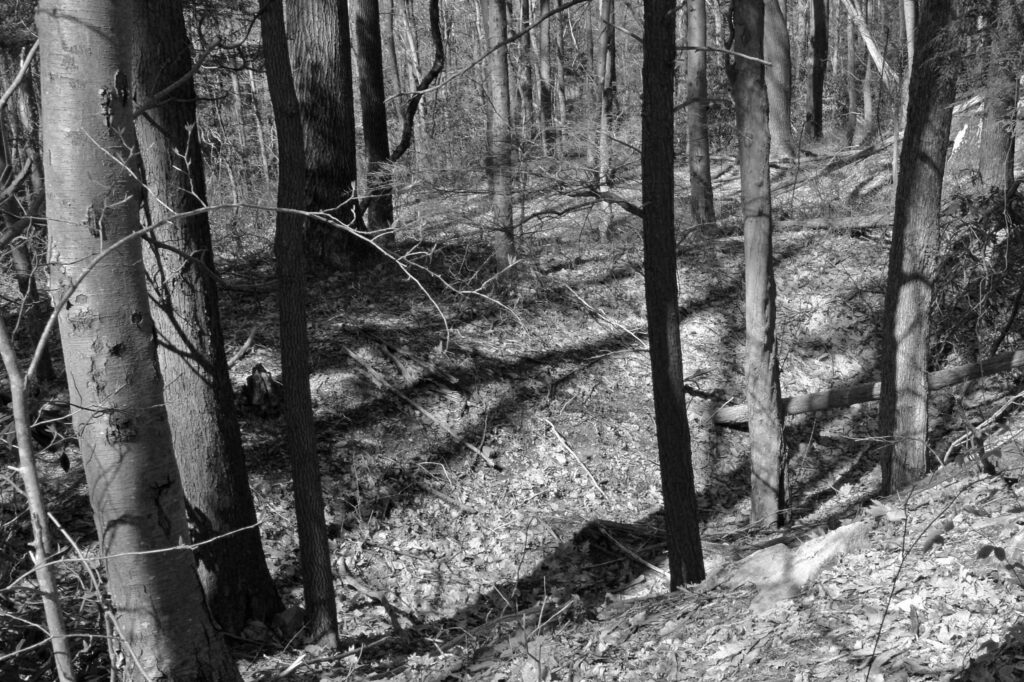
Continue down the road, perhaps another 0.10 miles. On left above the road are more iron ore mines. These are trenches (once the iron ore was located, it was mined by following the contours of the land). You will have to scramble up the bank to see these trenches (just be careful climbing up and down the bank; it can be a little treacherous). If you check around the base of trees near these trenches, you will see “spoils,” bits of shale excavated in the mining process, and generally you see fragments of iron ore as well. The iron ore is dense and heavy for its size and will be red and/or red and black. It will vary in size from fragments to sometimes large pieces. Historically, the miners called these ores, the “Red Belt Ores,” and are same ores mined on the other side of the road. These are also the earliest mines associated with the Henry Clay Furnace.
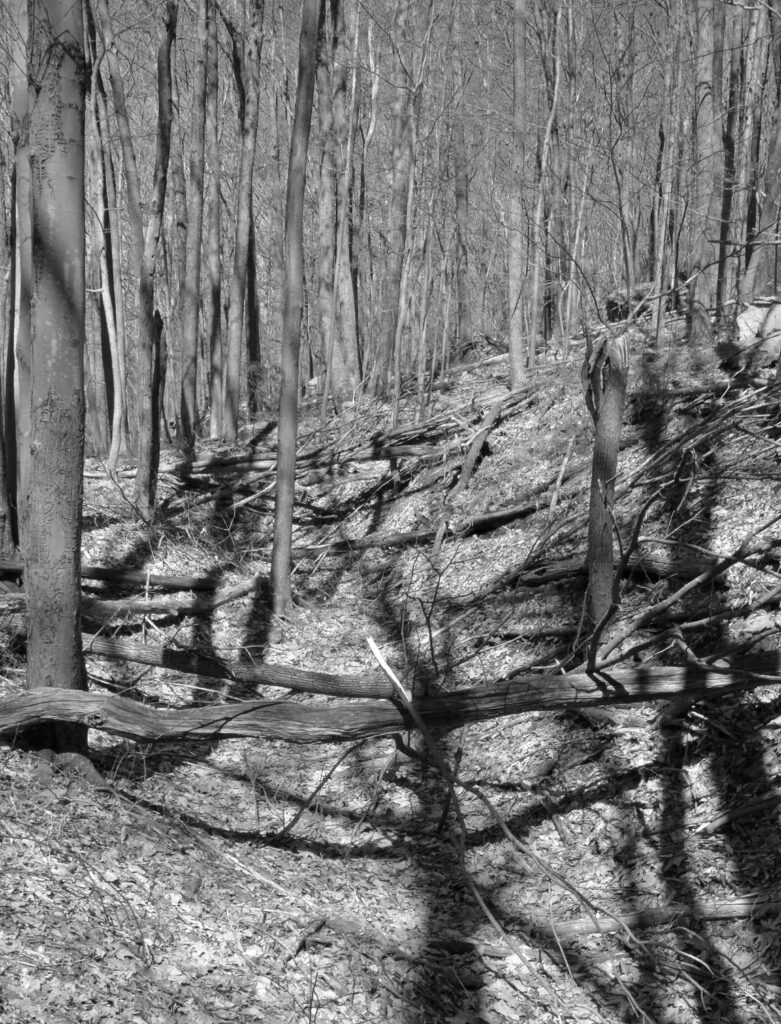
Not everything to see on your hike to the furnace relates to the iron industry. There are natural features too. As you near the furnace, the trail becomes a little rougher again. The bank is steep on the left and the hillside drops away on the right. Look to the right for a boulder, a piece of Connoquenessing sandstone. From up the trail it looks like another rock, in a landscape full of rocks and boulders, but continue down the road another ten feet or so, past the boulder and look back up at it. It may take a moment or two to find the right perspective, but you will see a boulder that has the distinct shape of a fish. You can make out the mouth, the eye, a fin, and the tail. The tail makes a fine seat too if you need to take a break.
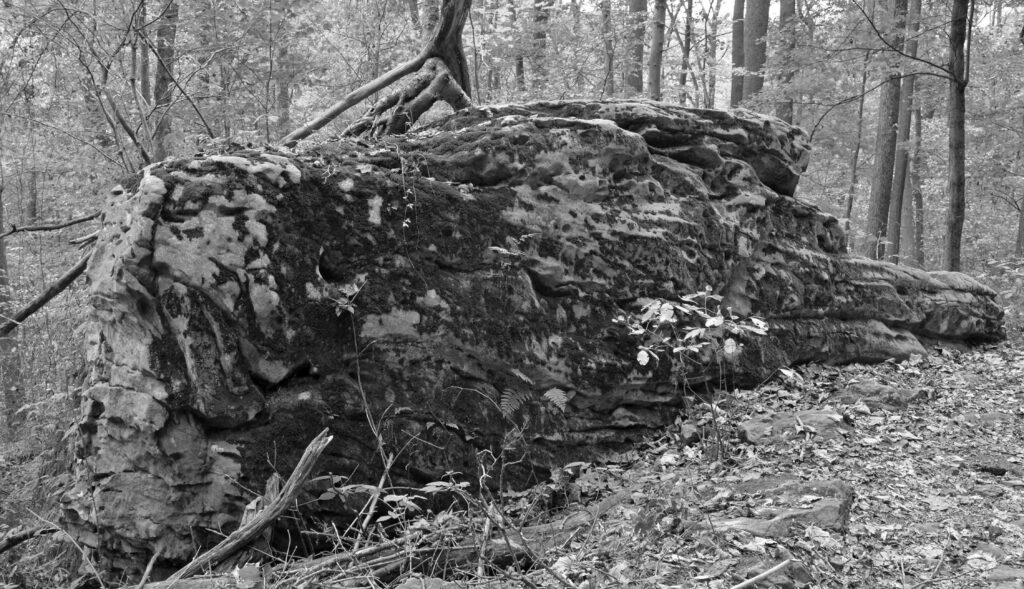
When you arrive at the junction of the Henry Clay Furnace road and the Advanced Ski Trail, take a moment to stop and look at the back of the furnace. This level ground was where the furnace was charged with its blend of iron ore, limestone, and charcoal used in the smelting process (no longer extant, but there was a bridge that connected this area with the furnace). Notice the ground is black from the charcoal. Also note how the bank behind the furnace has been eroded by mountain bikers riding down the hillside. This is a fun ride I am sure, but this activity is extremely bad for the furnace remains.
As you resume your hike toward the furnace, the road bends to the right and it becomes rather rough again. This part of the road was paved using slag. Slag is the glassy byproduct of iron smelting process. Slag is ubiquitous around the furnace with “slag heaps,” or piles of slag everywhere within a quarter mile of the furnace. There is even a slag island in Clay Run.
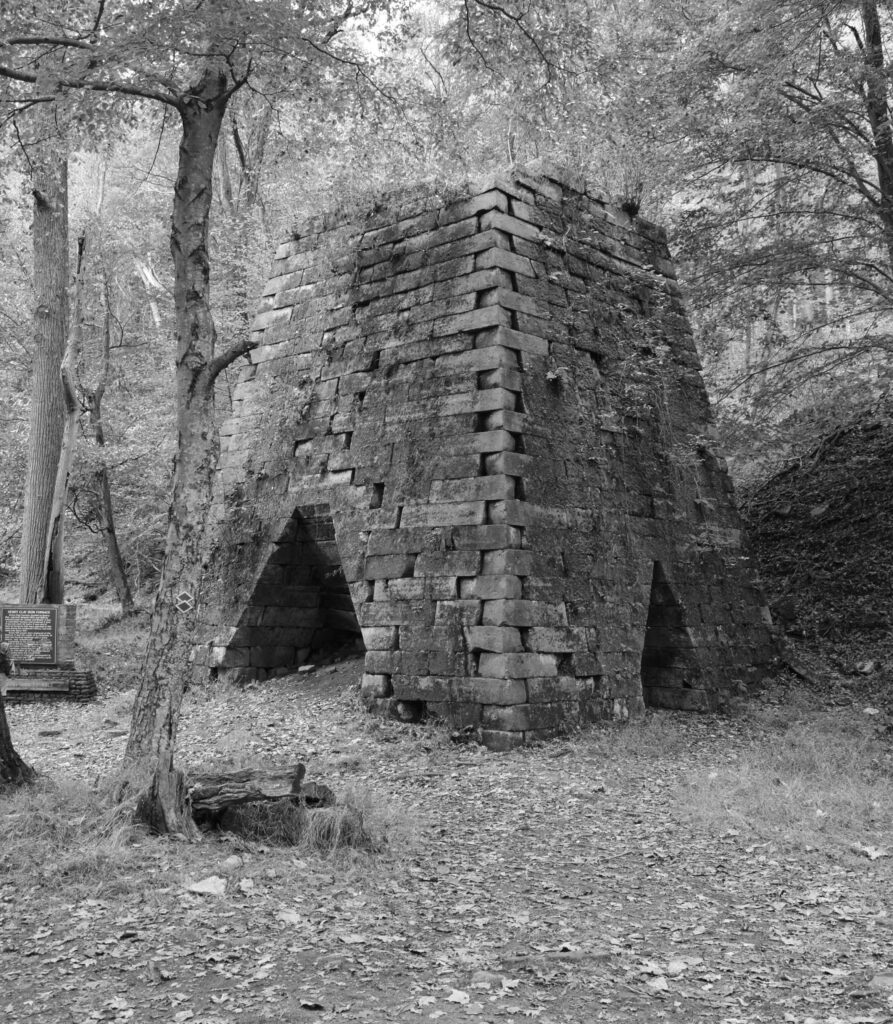
When you arrive at the furnace, take some time to closely look at it. The furnace is in remarkable condition for a structure that is nearly two hundred years old. Look at the stonework. Each stone was hand cut and placed without the use of power tools or other modern construction equipment. Also notice the care taken to add texture or rustication to each stone block.
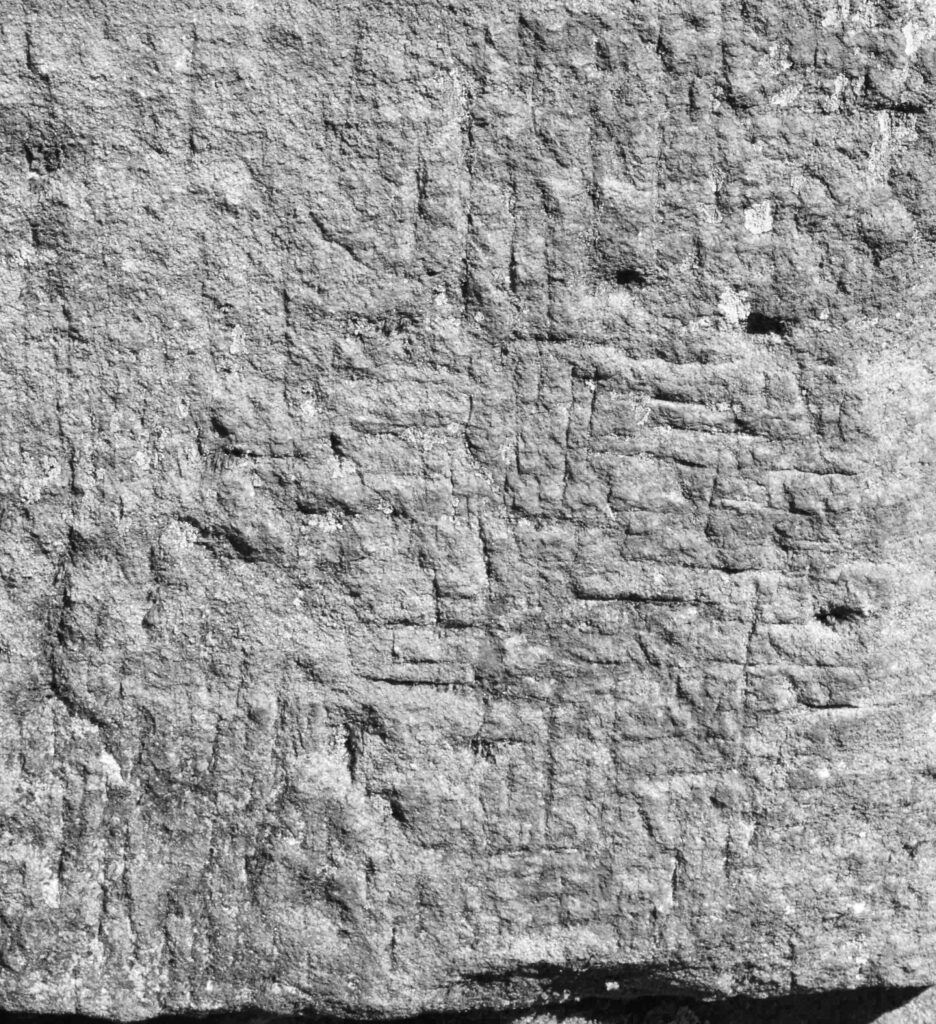
This concludes your tour to the Henry Clay Furnace. From here you can return the way you came or venture on one of the forest trails that connect at the furnace. Most of all enjoy your time at Coopers Rock State Forest!





